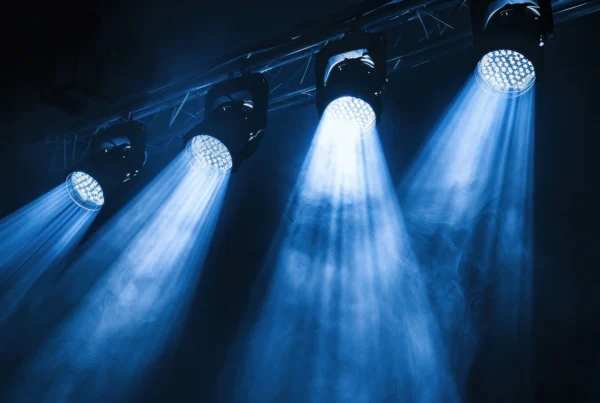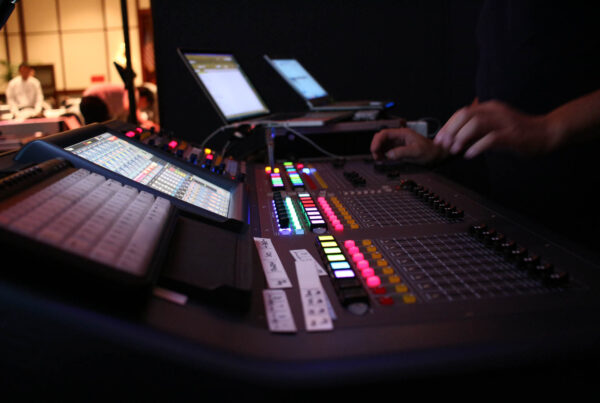When you’re planning an event—from a corporate launch to a festival, concert, or stage production—having the right visuals is just as critical as great sound and lighting. The choice of display technology can make the difference between a memorable experience and a forgettable one. For most event producers, the term LED screen rental is now a vital part of the conversation. But in 2025 the landscape has evolved: what qualifies as a “top option near me”? What should you look for? And how do you evaluate rental offers so you get not just a screen, but an impactful visual platform?
In this article we’ll explore why renting rather than buying makes sense for many events, what criteria define the best options in your region, the most important specs and features to look out for, and practical tips to choose the right supplier and avoid problems.
Why Rent Instead of Buy?
Purchasing an LED video wall or large display for a one-off event or even an occasional production can be impractical. Costs are high, installation and maintenance burdens are real, technology changes quickly, and transport or storage needs can become complicated. Rental, on the other hand, gives you flexibility, access to the latest technology, full service, and scalable pricing that fits your event. Many providers now offer one-day rentals through multi-day campaigns, custom sizes, and integrated packages.
With more events happening in varied venues—indoor, outdoor, and hybrid—the term LED screen rental has become a shorthand for “professional, flexible visual solution for temporary use.” The ability to find providers “near me” means avoiding excessive transport costs, staging delays, and local regulatory issues.
What Defines a Top Option in 2025?
As of 2025, a “top option” for LED screen rental near you should include several key elements that ensure performance, safety, and reliability.
Regional availability and logistics
Look for companies with local inventory, established rental workflows, efficient transport, and quick setup. Equipment arriving from far away can cause delays, hidden costs, and coordination issues.
Latest-spec modules and technology
The best rentals now feature modular panels with fast-lock systems, front service access, high refresh rates for camera and live streams, and brightness levels suited to both indoor and outdoor use.
Flexible sizing and configuration
Top suppliers allow you to build the exact size you need—from modest indoor screens for conferences to large outdoor walls spanning tens of square metres.
Full service and technical support
Rentals that include transport, rigging or trussing, cabling, on-site technicians, and dismantle save you time and stress. Comprehensive support ensures your event runs smoothly.
Transparent pricing and specs
Good rental providers publish clear spec sheets showing pixel pitch, brightness, weather rating (IP), cabinet size, and price ranges. Transparency builds trust and allows you to compare offers easily.
Indoor and outdoor versatility
Because events vary—from corporate boardrooms to open-air festivals—the ability to rent screens that perform well in direct sunlight, rain, or high ambient light is essential.
Local compliance and safety
Make sure the rental company provides safe rigging or trussing, certified electrical distribution, proper structural support, and compliance with local regulations. Missing documentation or improper setup can cause costly delays.
What Specs Should You Focus On?
When evaluating rental options, pay close attention to the technical specifications that directly impact quality and reliability.
Pixel pitch determines the image sharpness at different viewing distances. For indoor setups, look for pitches between 1.5 mm and 2.5 mm, while large outdoor walls can range from 4 mm to 10 mm.
Brightness, measured in nits, is critical for visibility. Indoor screens typically require 800–1500 nits, whereas outdoor setups in daylight need over 5000 nits.
Refresh rate affects camera performance—high refresh rates eliminate flicker during video or live streaming.
Weather rating or IP classification ensures protection from water and dust. For outdoor use, IP65 or higher is recommended.
Cabinet size and modularity affect how quickly a screen can be assembled or dismantled. Modern panels with quick-lock systems save hours of setup time.
Rigging and ground-stack options should fit your venue. Some events need suspended screens, while others require freestanding structures.
Service and maintenance access, especially front-service panels, allows faster on-site repairs.
Rental term flexibility, transport, setup, and insurance are also key factors that define a professional provider.
Rental Service Types You’ll Encounter
When you search for “LED screen rental near me,” you’ll find several types of services, each tailored to specific event styles and venues.
Mobile LED trailers or trucks
These are pre-mounted screens on a vehicle or trailer, ideal for outdoor events, fan zones, or temporary exhibitions. They offer quick deployment and minimal setup time.
Standard modular LED walls
These are the most common rentals, made of rectangular panels assembled into flat or curved walls. They are used for concerts, conferences, trade shows, and stage backdrops.
Curved or custom-shape screens
Curved and custom-shape configurations create immersive experiences for creative productions, product launches, and exhibitions.
Transparent or floor LED screens
Transparent screens are popular for retail events or modern stage design where see-through visuals are needed. LED floor panels are used for interactive dance floors or experiential installations.
Hybrid indoor/outdoor kits
These versatile packages combine panels suitable for both indoor and outdoor use, perfect for events that transition from daylight to night or operate in partially open venues.
Practical Tips to Choose a Local Rental Provider
When you start searching for providers near you, focus on both technical and logistical fit.
Search using your exact city or region to find companies that operate locally—this minimizes delivery time and transport cost.
Request several quotes from different suppliers and compare what’s included. Pay attention to delivery, setup, technician hours, power requirements, and dismantle services.
Inspect their equipment if possible. Ask to see the actual panels and check for dead pixels, uneven brightness, or color inconsistencies.
Discuss logistics early. Find out the access points, truck parking, power capacity, and setup time your venue allows.
Ensure the company offers weatherproof solutions for outdoor use. A bright sunny day or unexpected rain can make or break your visuals.
Verify their technical team’s experience. Well-trained technicians can troubleshoot quickly and ensure synchronization with lighting and sound systems.
Always confirm what’s included in the package. Sometimes a quote may exclude essential components such as truss structures, power distribution, or video processors.
Ask for portfolio examples or references. A provider experienced with concerts, festivals, and large-scale productions is usually more reliable than a newcomer.
Review the contract terms carefully. Check who’s responsible for damages, weather delays, or extra hours beyond the agreed rental time.
Why 2025 Is the Perfect Year to Rent
In 2025, LED screen rental services have become more accessible, affordable, and advanced than ever before. Modular systems, high-resolution panels, and energy-efficient designs are now standard. Many rental companies offer weather-resistant, high-brightness panels for outdoor use and fine-pitch screens for indoor corporate events.
The market has also grown to support hybrid events—live audiences combined with online streaming. This shift increased demand for high-refresh-rate screens and reliable video processors, ensuring seamless visuals across physical and digital platforms.
Additionally, regional providers have expanded their inventories, meaning you can often find high-quality LED screens without paying for long-distance transport. That makes local rentals faster, cheaper, and easier to coordinate.
Understanding Costs and Budgeting
LED screen rental prices vary depending on size, resolution, duration, and location. For example, a small indoor wall for a corporate event might cost a few hundred euros per day, while a large outdoor screen for a festival could cost several thousand.
Your total budget should also include power supply, structure, transport, technician hours, and any overtime costs. Always confirm if installation, configuration, and dismantle are included in the quoted price.
Booking early can often secure better rates and ensure availability during peak seasons. Many rental companies offer discounts for multi-day events or long-term partnerships.
The Role of LED Screens in Event Experience
LED screens have evolved beyond just “big displays.” They are now integral storytelling tools in modern events. From live concert backdrops to interactive presentations, they amplify visual impact and audience engagement.
In festivals, they display dynamic visuals synchronized with music. In corporate events, they support branding and live data presentations. In public events, they ensure every attendee sees the message clearly, no matter how large the crowd.
The growing creativity in stage design has also fueled demand for flexible LED systems. Transparent, curved, and modular setups help designers create unique environments that match the event’s theme and identity.
Key Takeaways
Renting is often more cost-effective and flexible than buying for temporary or touring events.
Top local providers in 2025 offer high-spec panels, transport and setup included, indoor and outdoor versatility, and transparent pricing.
Focus on pixel pitch, brightness, refresh rate, and safety standards when comparing options.
Evaluate providers by inspecting equipment, reading client reviews, and verifying technical support availability.
Always plan your logistics—power, rigging, access, and dismantle—alongside your screen choice.
Conclusion
For any event organizer searching “LED screen rental near me,” 2025 offers more options and better technology than ever before. Modern rental companies provide not just equipment, but complete visual solutions—custom-sized screens, professional setup, and on-site technical support.
The right rental partner will ensure your visuals are vibrant, reliable, and seamlessly integrated into your event. Whether you’re producing a music festival, hosting a corporate conference, or launching a new product, choosing the right LED screen rental service near you will guarantee your audience sees your message in the best possible light.

